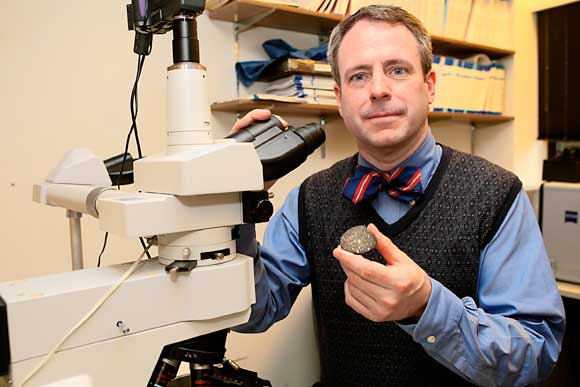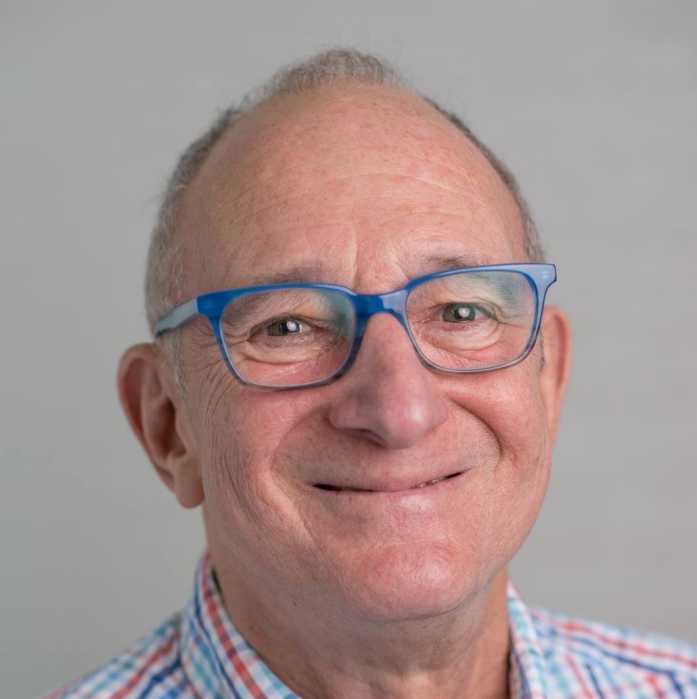Brooklyn’s latest rock star isn’t a musician with a microphone — he’s a scientist with a microscope!
Kingsborough Community College professor Harold Connolly has discovered a new mineral called krotite that may help to uncover the mysteries of the universe.
Connolly and an intern, Stuart Sweeney Smith, were studying a meteorite about two years ago when they realized it included millimeter-sized piece that resembled a cracked egg and had an odd chemical composition.
“We weren’t sure what we had, but we knew it was unlike anything else,” Connolly said.
After months of analysis, Connolly confirmed that part of the meteorite’s composition — calcium, aluminum and oxygen — comprises a new mineral. His findings were published in the esteemed rock journal, the American Mineralogist, this month.
Well-known minerals include gold and silver, but the classification is applied to any naturally occurring solid that is made of one or more elements (you know, those letters on the Periodic Table). There are more than 4,000 minerals and dozens of new ones are uncovered each year, but krotite is remarkable because of its origins: Connolly said that this microscopic substance is the third type of solid to form in our solar system more than four-and-a-half billion years ago, so it could lead to more information about how the planets developed.
“A lot of new minerals were formed more recently [on earth], but krotite is more exciting because it was formed in space and it’s the building block of planets,” said Stuart Mills of the Commission of New Minerals, which officially recognized krotite this year.
Connolly and his crew dubbed the mineral krotite to pay homage to Alexander Krot, the University of Hawaii scientist known for his research of early solar system processes.
“I feel honored,” Krot said.
Connolly, who has taught at Kingsborough for 10 years, is unsure if krotite will have practical uses like the minerals lead or copper, but is looking forward to researching his discovery further.
“So far I can’t compare it to anything else, but we’ll see,” Connolly said.























